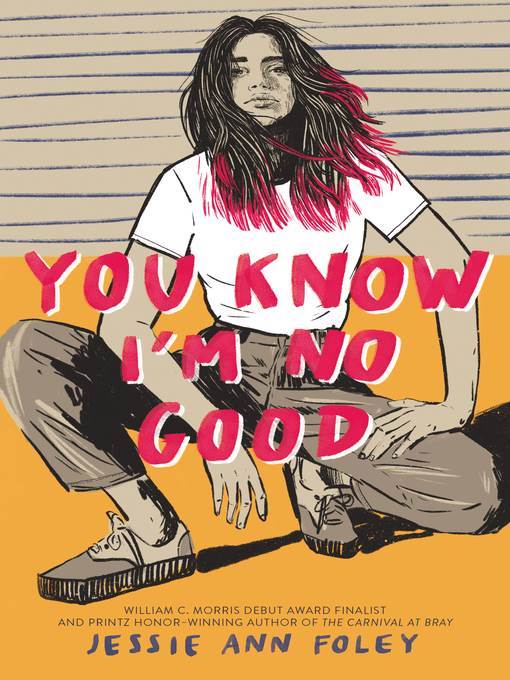
You Know I'm No Good
کتاب های مرتبط
- اطلاعات
- نقد و بررسی
- دیدگاه کاربران
نقد و بررسی

August 1, 2020
Gr 9 Up-In therapy, 17-year-old Mia Dempsey refers to her first sexual experience at 14 as a "crusty old wound," but it was rape. Mia thought that because she didn't say no, she had given consent. But she didn't give consent, and Scottie Currie, a senior, didn't stop. He also didn't stop his friends from bullying Mia mercilessly after the fact, until she started skipping classes and trading her education for "the chalky, numbing pop of cocaine." For three years she hung out with boys who drugged and assaulted her, all stemming from the first event, says her therapist, because "humans are often unconsciously drawn to the repetition of painful experiences." That's a clinical explanation for a shocking reality that too many young people experience. Denial is the core narrative of this novel. Harsh and unblinking, this is the story of one smart, tough, and funny girl who acts out, until she gives her stepmother two black eyes and winds up at Red Oak Academy, where the privileged send their troubled daughters. A few of them begin to heal: For Mia, getting better involves imagining something better for herself. It's a nearly impossible task, but her therapist, a new friend named Vera, and her parents believe that she can do it. The book features Mia's lengthy-and compelling-reading and listening list, ranging from Joy Harjo, Sylvia Plath, and Danez Smith to Kesha, Cardi B, and Amy Winehouse, from whom Foley has borrowed the book's title. VERDICT An instant winner, reminiscent of the classic Speak, with a caustically funny and searching teen protagonist who's in denial following her rape at the age of 14.-Georgia Christgau, LaGuardia Community Coll., Long Island City, NY
Copyright 2020 School Library Journal, LLC Used with permission.

August 15, 2020
A teen regarded as troubled is sent away to a therapeutic boarding school. High school junior Mia Dempsey started having sex, drinking, and doing drugs when she was 14. But after punching her stepmother in the face, Mia is sent to Red Oak Academy, a strict boarding school for troubled girls in Minnesota. Her dorm mates--impulsive Poppy, who stalked her ex-girlfriend; Vera, who self-harms; and Trinity, who shared naked photos of herself on the internet--provide a sense of camaraderie. Their friendly banter often lightens the mood while Mia processes her traumatic past (her mother was murdered by a boyfriend when Mia was 3) and contemplates how to get out of Red Oak. The arrival of a Danish girl named Freja, who cheerfully proclaims she's attending the school simply to evade the publicity that follows her celebrity mother, sparks trouble. Throughout the introspective first-person narrative, Mia is fierce and smart, but she is also vulnerable and lashes out, not always learning from her mistakes. The characters are fully realized and memorable, with both tender moments of friendship and emotional breakdowns. This is a thoughtful examination of sexual assault, trauma, and misogyny. Mia and most other characters are White; Mia's Red Oak therapist is described as half White and half Ojibwe, and two fellow students are people of color. Remarkably moving. (list of poems) (Fiction. 14-18)
COPYRIGHT(2020) Kirkus Reviews, ALL RIGHTS RESERVED.

August 24, 2020
The brochure for Minnesota’s Red Oak Academy: A Therapeutic Girls’ Boarding School for Troubled Teens says it is a place for a young woman to grow “straight and tall and proud in the forest of her life.” When Chicagoan high school junior Mia Dempsey, who “can’t stand fakeness,” arrives after punching her stepmother in the face, she approaches family therapy sessions and therapy with Holden Caulfield–like snark. As she makes friends, though—influencer Trinity, whose provocative selfies cost her mother a congressional seat; Poppy, who placed a pipe bomb under her ex-girlfriend’s car; and Vera, who self-harms—Mia starts to unravel the reasons behind her own behaviors, which include drinking, drugs, and sex. Printz Honoree Foley (The Carnival at Bray) slowly, unfurls Mia’s memories of her mother, who was murdered by her boyfriend when Mia was small, and the teen’s own sexual assault. Yet in facing trouble after defending one of her friends, Mia must decide between reverting to her old life or trusting her newfound voice. Though some readers may be bothered by the ending’s swift resolution and tonal shift, arresting dialogue and tender moments showcase the girls’ distinct and lively personalities while offering striking examples of the way society ignores teenage girls’ experiences, especially of trauma and misogyny. Ages 14–up. Agent: Barry Goldblatt, Barry Goldblatt Literary.

October 1, 2020
Grades 10-1 Mia drinks, does drugs, and sleeps around, but it's not until she punches her stepmother that she gets shipped off to Red Oak Academy, a therapeutic boarding school. Though its glossy brochures promise holistic, individualized treatments instead of a locked-down militarized approach, Mia, simmering with rage, still feels trapped. But Red Oak isn't just the facility itself, it's the girls who populate it, and as Mia gets closer to them?bright, desperate Poppy; sardonic, attention-seeking Trinity; and longterm resident Vera, with wounds as deep as Mia's own?she begins to reluctantly examine the closely held beliefs that led to her worst choices. Printz Honoree Foley (The Carnival at Bray, 2014) slips in greater musings on growing up female in a damaging society even as she clings closely to Mia's sometimes caustic, sometimes tender personal narrative, tracking her turbulent inner journey and slowly revealing that often what scars us the most is what we are the least willing to see. For teens?especially girls?still finding that place between vulnerable and armored, this will be a balm.(Reprinted with permission of Booklist, copyright 2020, American Library Association.)

























دیدگاه کاربران